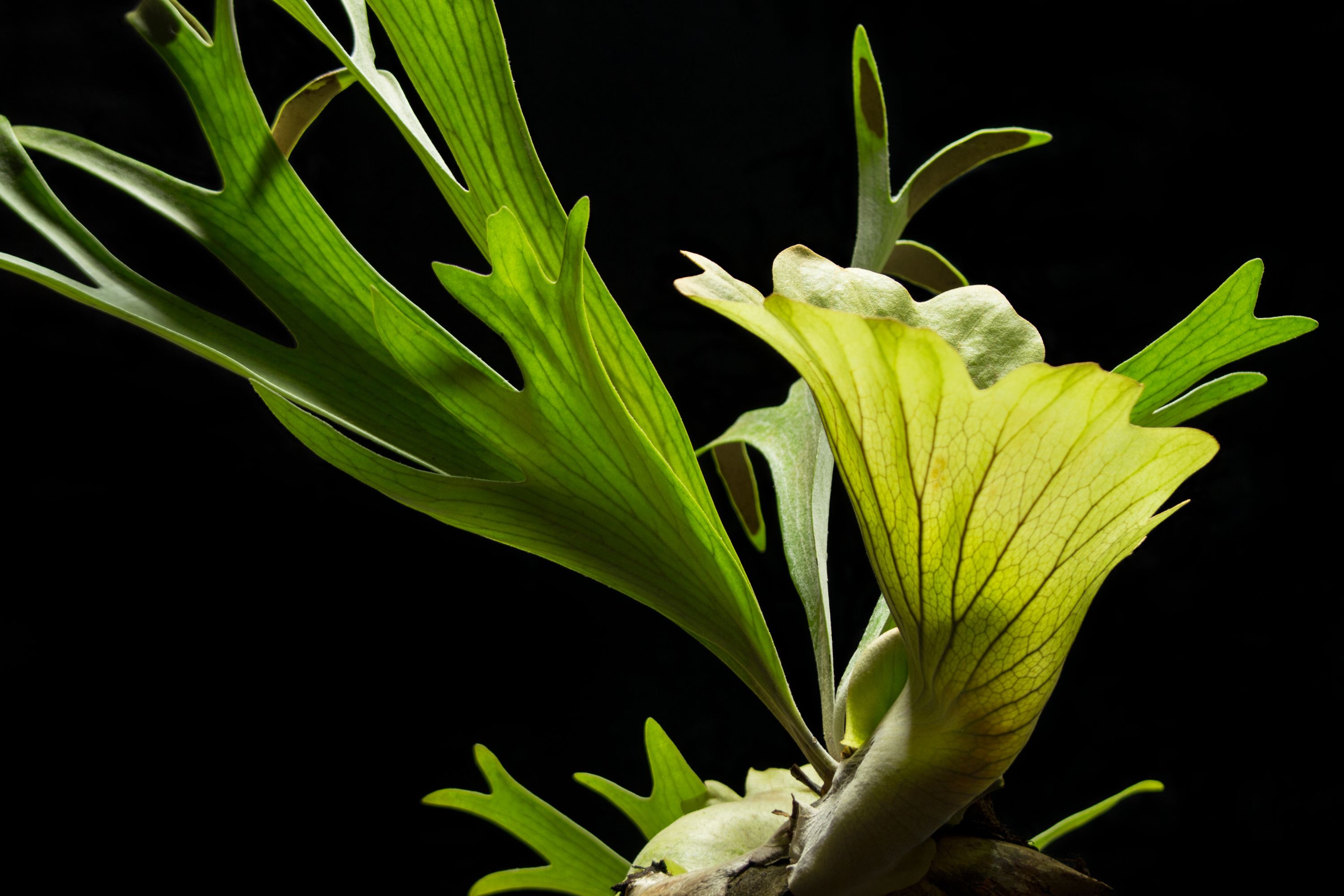Staghorn fern
(Platycerium bifurcatum)

Description
Platycerium bifurcatum, the elkhorn fern or common staghorn fern, is a species of fern native to Java, New Guinea and eastern Australia, in New South Wales, Queensland and on Lord Howe Island. It is a bracket epiphyte occurring in and near rainforests. Growing to 90 cm (35 in) tall by 80 cm (31 in) broad, it has heart-shaped sterile fronds 12–45 cm (5–18 in) long, and arching grey-green fertile fronds which are forked and strap-shaped, and grow up to 90 cm (35 in) long. The genus name Platycerium comes from the Greek platys (flat), and ceras (horn), while the specific epithet bifurcatum means bifurcated or forked. Both names are referring to the fertile fronds. Platycerium bifurcatum is cultivated as an ornamental plant for gardens. With a minimum temperature requirement of 5 °C (41 °F), in temperate regions it may be grown outdoors in sheltered locations, otherwise as a houseplant. It has gained the Royal Horticultural Society's Award of Garden Merit. Platycerium is a genus of about 18 fern species in the polypod family, Polypodiaceae. Ferns in this genus are widely known as staghorn or elkhorn ferns due to their uniquely shaped fronds. This genus is epiphytic and is native to tropical and temperate areas of South America, Africa, Southeast Asia, Australia, and New Guinea. Platycerium sporophytes (adult plants) have tufted roots growing from a short rhizome that bears two types of fronds, basal and fertile fronds. Basal fronds are sterile, shield or kidney shaped and laminate against the tree and protect the fern's roots from damage and desiccation. In some Platycerium species the top margin of these fronds forms an open crown of lobes and thereby catches falling forest litter and water. Fertile fronds bear spores on their undersurface, are dichotomous or antler shaped and jut out or hang from the rhizome. The spores are born in sporangia clustered in large sori that are usually positioned on the lobes or at the sinus between frond lobes. Some species of Platycerium are solitary having only one rhizome. Other species form colonies when their rhizomes branch or when new rhizomes are formed from root tips. If the conditions are right the spores will germinate naturally on surrounding trees. Platycerium gametophytes are a small heart-shaped thallus.
Taxonomic tree:







